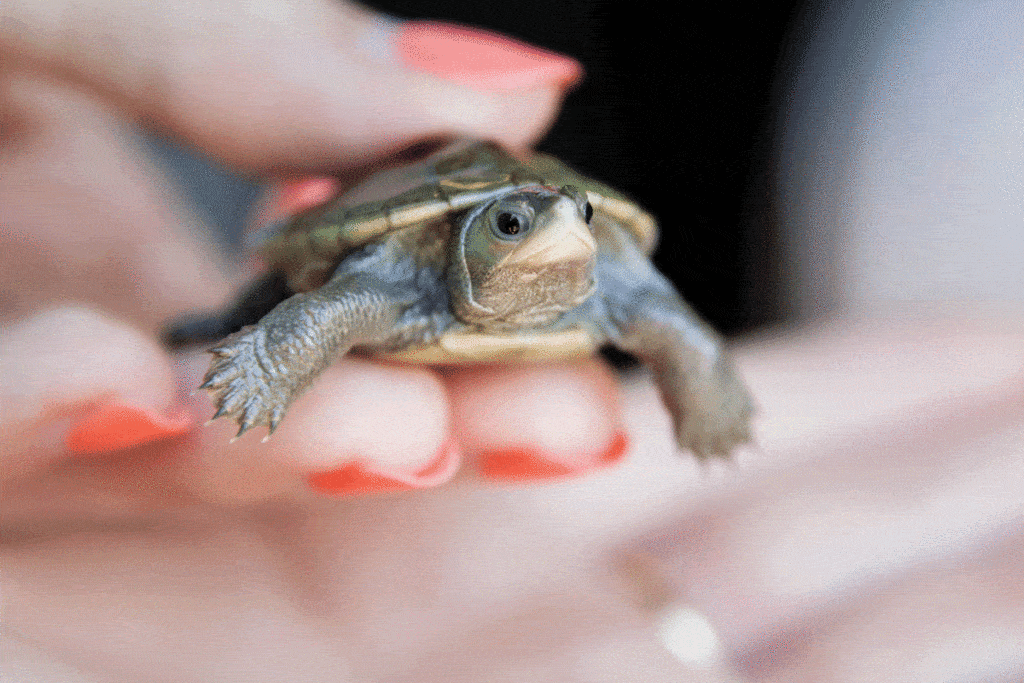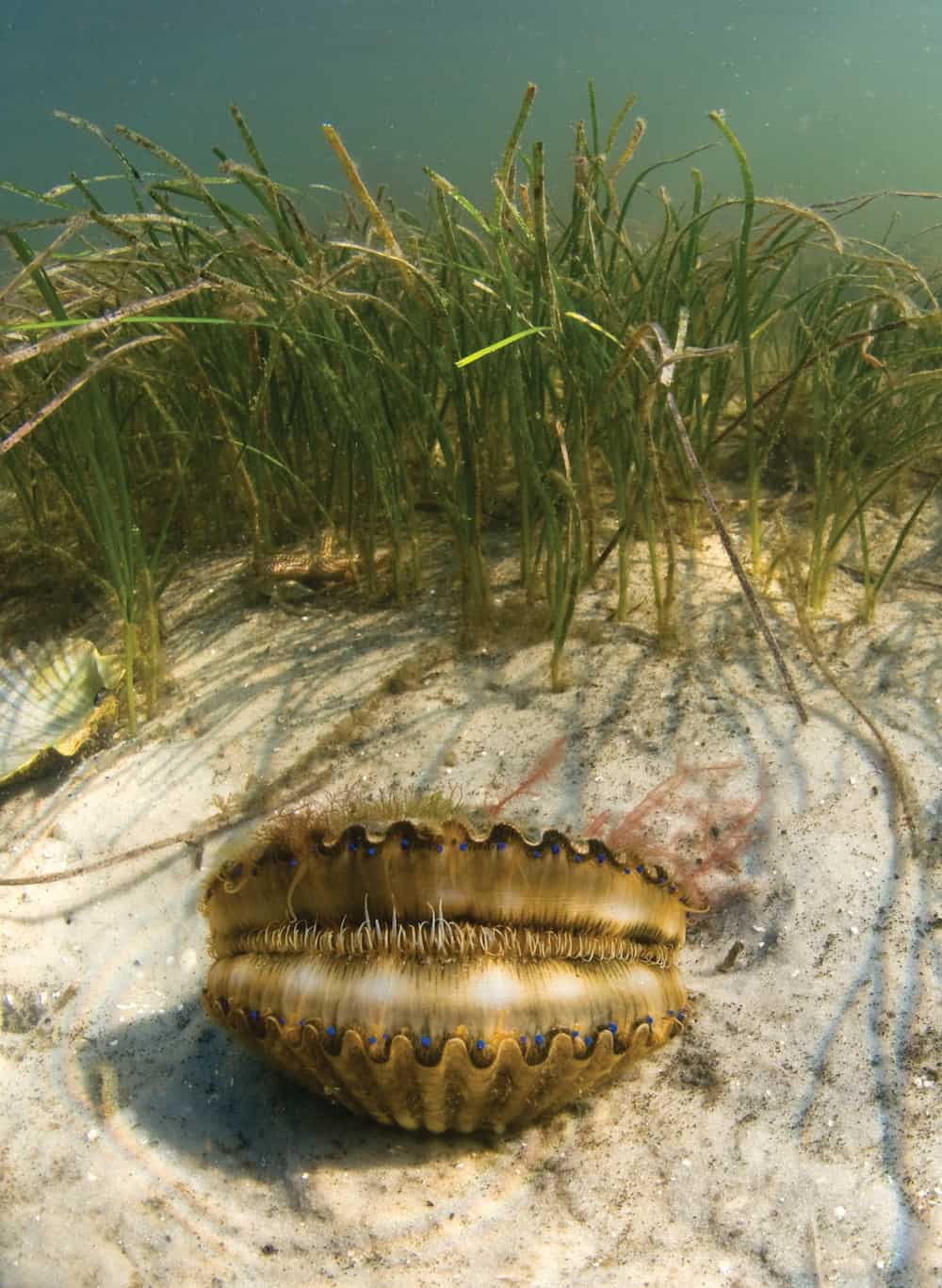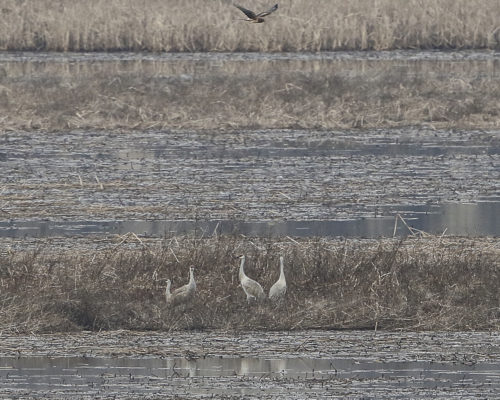Research and education team up for conservation
On this dog day in August, noted turtle biologist Dr. Willem Roosenburg prowls the Poplar Island beaches looking for quarter-size, diamond back terrapin hatchlings emerging after incubating in the warm sand for 60 days. These lucky hatchlings will see their first light at the Paul S. Sarbanes Ecosystem Restoration Project on this small island in the middle of the Bay, a terrapin sweet spot of restored wetlands and sandy beaches. This is ideal turtle nesting habitat without the fox and racoon predators found on the mainland. In addition to providing research opportunities, abundant hatchlings enable Roosenburg and his colleagues to support educational programs that use terrapins to teach environmental awareness and literacy.
Each year, Roosenburg and his research team capture about 800 hatchlings and send 160 to 200 of them to Maryland classrooms to be raised over the winter. Thereby, research and education complement each other and work together as a conservation strategy for Maryland’s iconic reptile.
Diamond Research
Every summer since 2002, Roosenburg has led an Ohio University research team to Poplar Island to collect hatchlings and mark terrapin nests with pink flags along the shore. Nests usually contain about 13 eggs buried six inches in the sand. Egg depth and temperature determine the sex of adult turtles. The absence of major mammalian predators on the remote island provides unique opportunities to study terrapin nesting habits without the nest destruction caused by predators. Over the summer, scientists capture, mark, release, and recapture terrapins to better understand their life cycle.
The research has provided some interesting insights. For example, Poplar Island hatchling survival rates greatly exceed those found on the nearby mainland despite the many herons, egrets, and gulls that gobble small terrapins like potato chips. Researchers also discovered that about 30 percent of juvenile terrapins overwinter in their nests and wait to emerge the following spring. In the absence of foxes and racoons, novel predators such as snakes and mice prey on terrapin eggs.
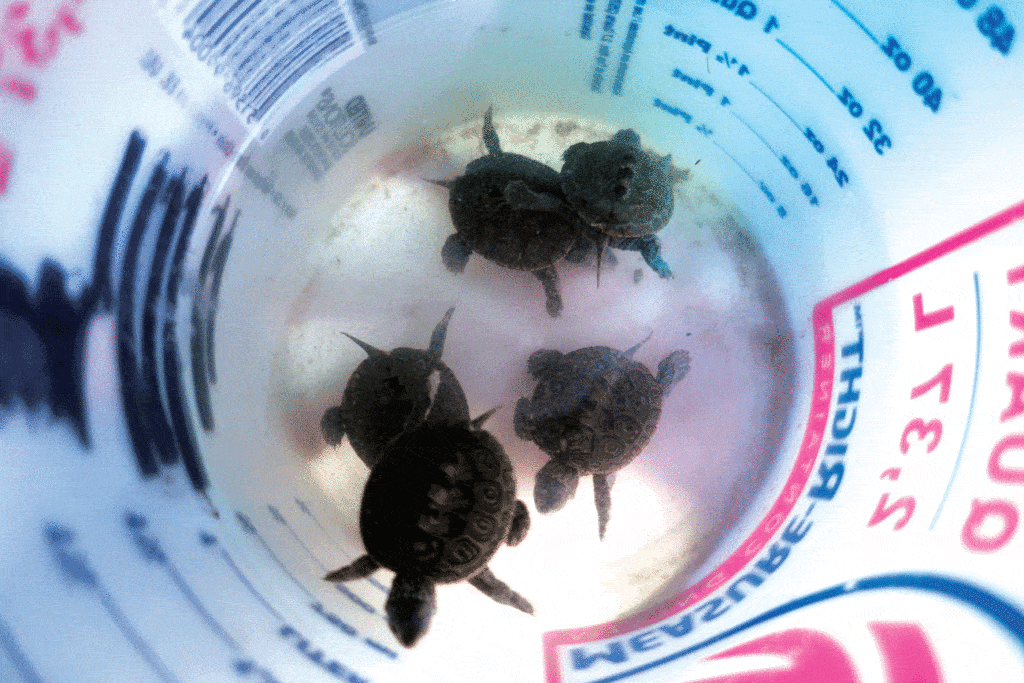
Turtles in Class
Beyond his research work, Roosenburg partners with Maryland schoolteachers through a program sponsored by the Maryland Department of Transportation Maryland Port Administration (MDOT MPA), administered by Maryland Environmental Service (MES), whereby school children learn that so-called “head-start” hatchlings raised in warm classrooms grow faster than their natural cohort, which hibernates through the Bay winter. Because head-starts grow faster than wild terrapins, they may present an effective strategy for turtle conservation. Perhaps more importantly, female head-starts tend to nest two years earlier than their wild counterparts. This earlier reproduction may accelerate terrapin population growth around Poplar Island. Researchers now witness head-start terrapins returning to the island to dig their own nests. Because Poplar Island produces such a large number of hatchlings each year, scientists continue to collect data and compare life cycles of head-starts versus wild hatchlings. The head-start program also allows school children to make important contributions to terrapin research that may someday guide the way for turtle conservation and inspire future scientists.
Ecosystem Restoration
In 1847, Poplar Island spread across more than 1,000 acres. In the early 1900s, it supported a thriving community of about 100 people with several farms, a school, church, post office, and a sawmill. Later, the island served as a retreat for Franklin Roosevelt and Harry Truman. Subsequently, erosion and subsidence washed away most of the island, and by 1996, only five acres remained on four remnant islands. In 1998, the US Army Corps of Engineers and MDOT MPA formed a partnership to rebuild the island and restore salt marshes using dredged material from the approach channel to the Port of Baltimore. The project continues apace and will create approximately 50 percent of the restored island as spartina salt-marsh and the remainder as uplands, including forests, meadows, freshwater wetlands, and scrub-shrub habitat. Construction of the first perimeter dike began in 1998 and was completed by 2002. A major project expansion is currently underway on the north end.
Originally, engineers planned restored habitat mainly for black ducks, herons, ibis, and egrets. Today, the island hosts over 200 bird species. Terrapins serendipitously came ashore in 2002, and their numbers have continued to grow. The dredge-and-fill project will continue until 2044, when Poplar Island will have received 68 million cubic yards of dredged shipping channel material. The restored island will add 776 acres of tidal wetlands and 829 acres of upland forest habitat within Chesapeake Bay.
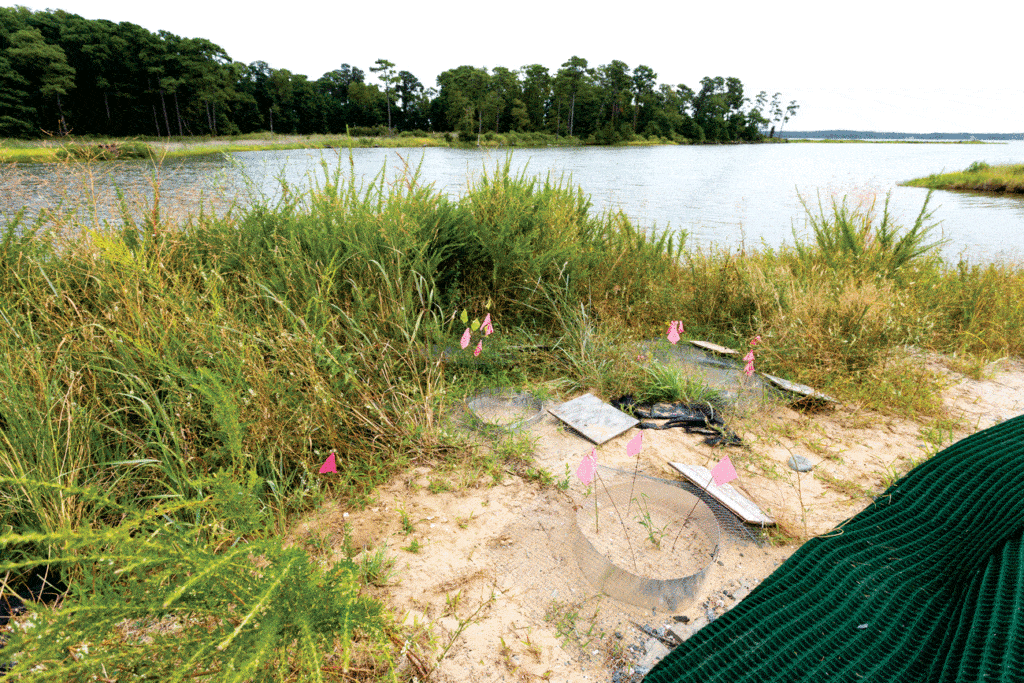
Back to School
At the National Aquarium in Baltimore, educational specialist Andrew Walker meets teachers selected for the Terrapins in the Classroom program. On this September night, after Roosenburg describes terrapin biology to the assembled teachers, Walker reviews instructions and provides tips for raising happy turtles. He then leads the group to the lab to receive the wiggling baby terrapins in their waiting buckets. This year, the National Aquarium selected 42 Maryland schools from among many applicants to raise Poplar Island’s summer hatchling crop. Teachers and students will care for them over the school year and return them to Poplar Island the following spring. While teachers present textbook lessons, students learn about terrapins by feeding, caring, and measuring them. Similar programs operate at Arlington Echo Outdoor Education Center for Anne Arundel County and Maryland Environmental Services on the Eastern Shore. Together, they have released over 2600 terrapins since 2005.
Although Andrew likes to watch and handle the juvenile terrapins, he most enjoys working with teachers. “Our teachers are an absolute inspiration,” he says. “In addition to shaping young minds, they bring a joy and passion that I find truly impressive.” He notes that selected classrooms represent 12 Maryland counties and Baltimore City. Some of them travel long distances to attend trainings and receive hatchlings. “We support our teachers, but we also ask a lot of from them,” he says.
Terrapins in the Classroom is one of many National Aquarium programs that provide unique, hands-on opportunities for students to form meaningful connections to the Chesapeake Bay ecosystem. It joins the Terrapin Education and Research Partnership (TERP) sponsored by MDOT MPA in a common goal to inspire the next generation of conservationists based on a belief that education leads to inspiration and conservation. Walker sees the inspiration develop. “It’s amazing to see how teachers and students connect to their terrapins in such a short amount of time,” he says. “Release day is always exciting, but also emotional as the students say goodbye to their terrapins.”
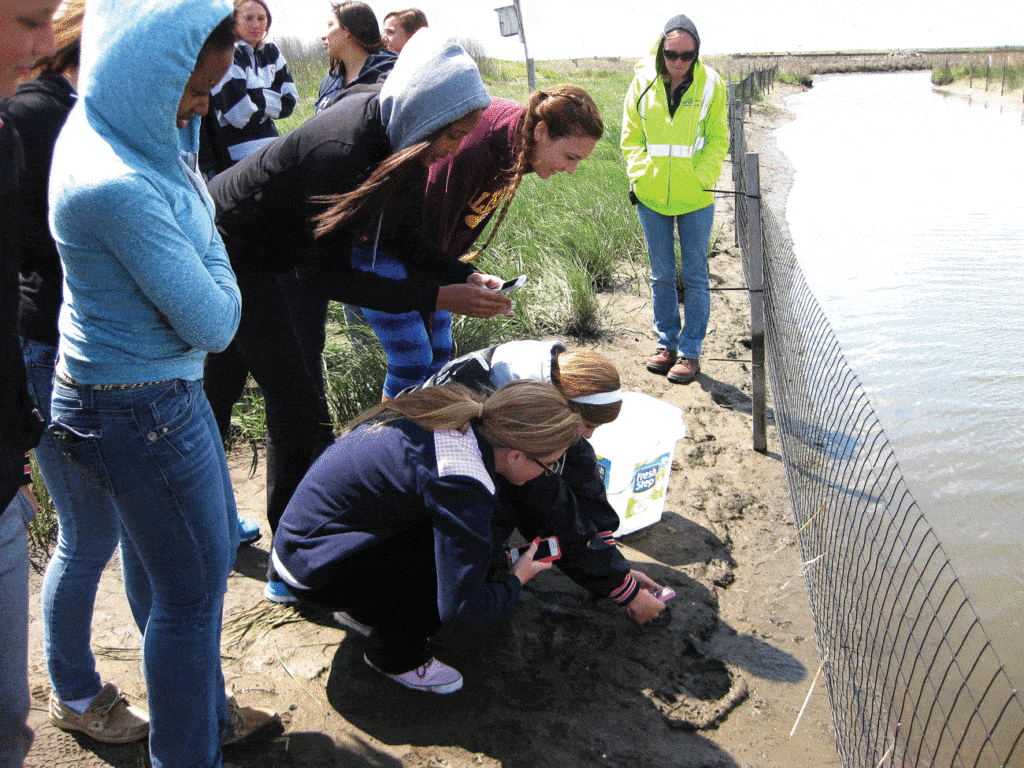
Letting Go
On release day in the spring, many students will take their first trip ever over the Bay Bridge followed by a 30-minute boat ride from Tilghman Island aboard Maryland’s Poplar Island work-vessel, the Terrapin. Students tour the island and listen to presentations about salt marsh ecology, the beneficial use of dredged material, and terrapin natural history. They observe active construction operations and find pink flags marking terrapin nests growing next year’s crop of hatchlings. The trip culminates with students walking to the edge of the salt marsh in one of Poplar Island’s wetland cells and releasing their terrapins.
Prior to the release, veterinarians inspect the turtles to ensure their health and readiness. Then, scientists mark them with a microchip- PIT-tag (Passive Integrated Transponder) to enable later identification.
Roosenburg and his field crew use nets and traps to capture terrapins throughout the summer, and they track head-starts along with their wild counterparts. Researchers post head-start recaptures to social media on the day of capture so that teachers and students can learn the status of those that were in their charge. Several have been recaptured more than ten years after their releases. Others have dispersed from the island and relocated to Tilghman Island or other nearby shores.
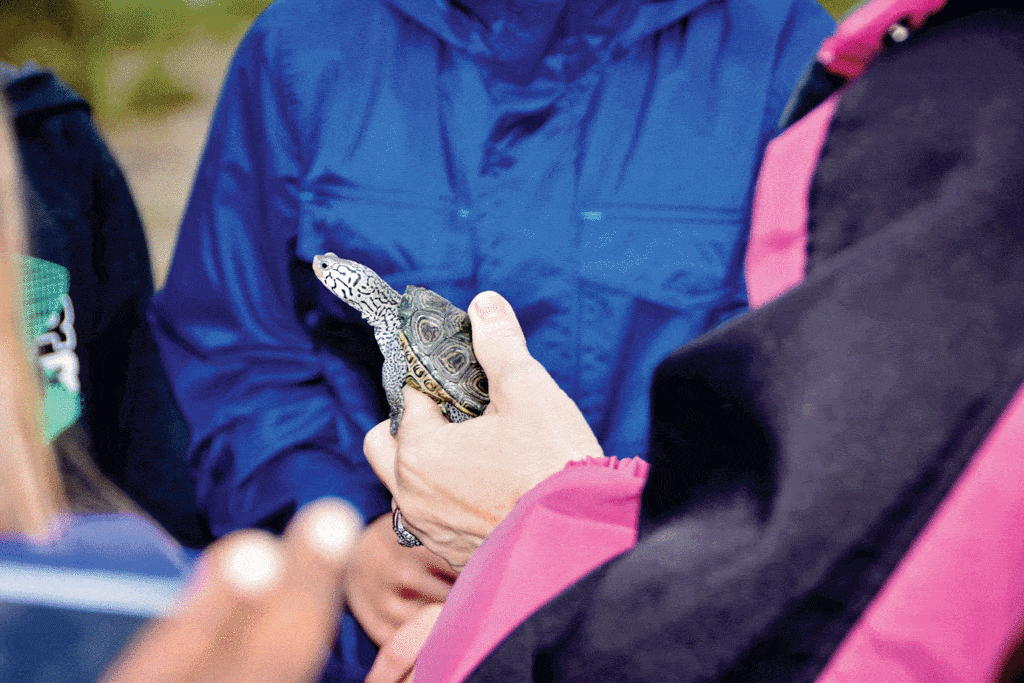
Conservation and Commerce
The Poplar Island restoration project has become an international success story. Experts from around the world come to see how this a collaboration uses dredge material to restore valuable tidal habitat. For Maryland, it is a win-win for the environment and the economy. Chesapeake Bay’s native species benefit from the restoration of tidal wetland habitat, and maintenance dredging of the Bay’s shipping channels keeps the keels of commerce moving safely into the Port of Baltimore. The project maintains a public outreach effort to explain the benefits to the Bay community. In addition to education programs, the partnership hosts community events and conducts Poplar Island tours aboard the Terrapin, which leaves daily between March and October from the MES pier on Tilghman Island. For more details on the project and to register for a tour visit poplarislandrestoration.com or email poplartours@menv.com.
Poplar Island terrapin restoration represents a hard-earned victory for Chesapeake Bay conservation. Despite increasing numbers of Poplar Island terrapins, other populations throughout the Bay continue to decline. Expanding urban and suburban development destroys beach habitat and brings uncontrolled mammalian predators, while other terrapins get crushed on highways or drown in crab pots. Managers can use the knowledge gained from Poplar Island research to restore terrapin populations throughout the Bay. In the meantime, the project demonstrates how effective management, science, and citizen involvement can work together to protect Maryland’s state reptile.

